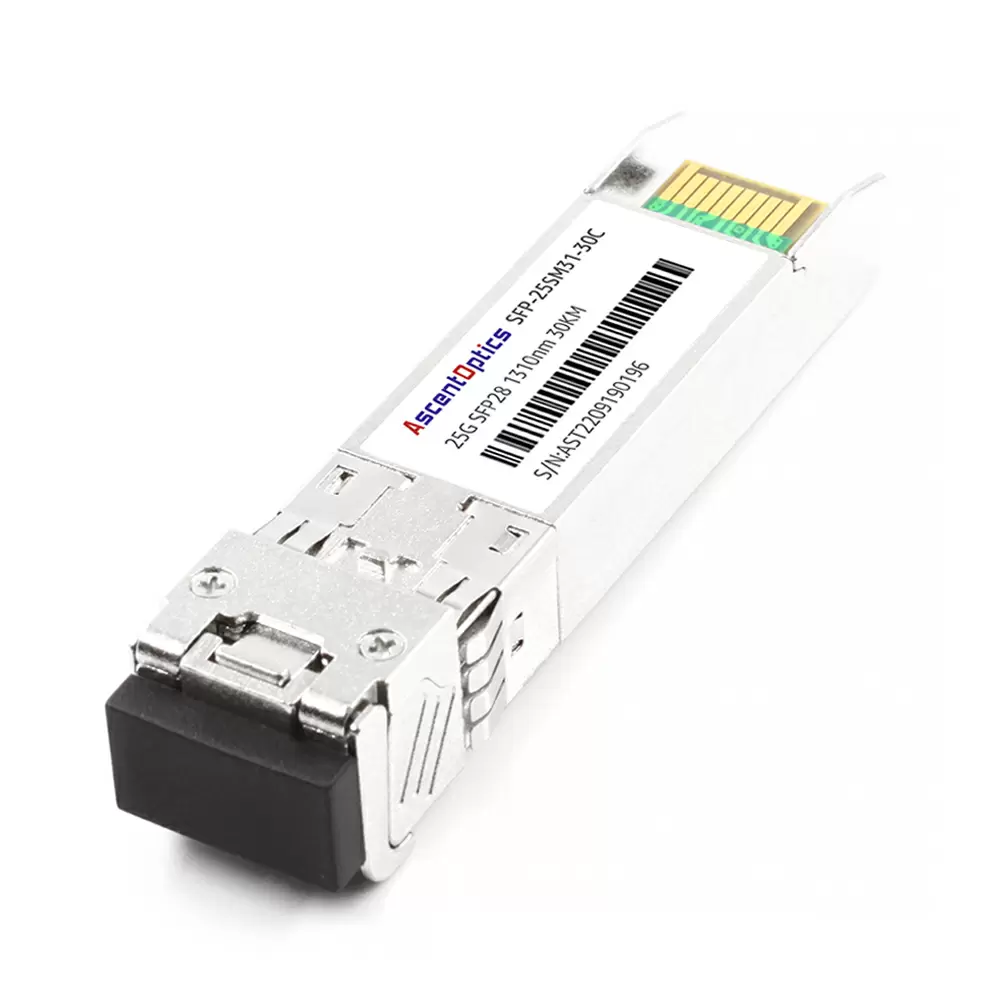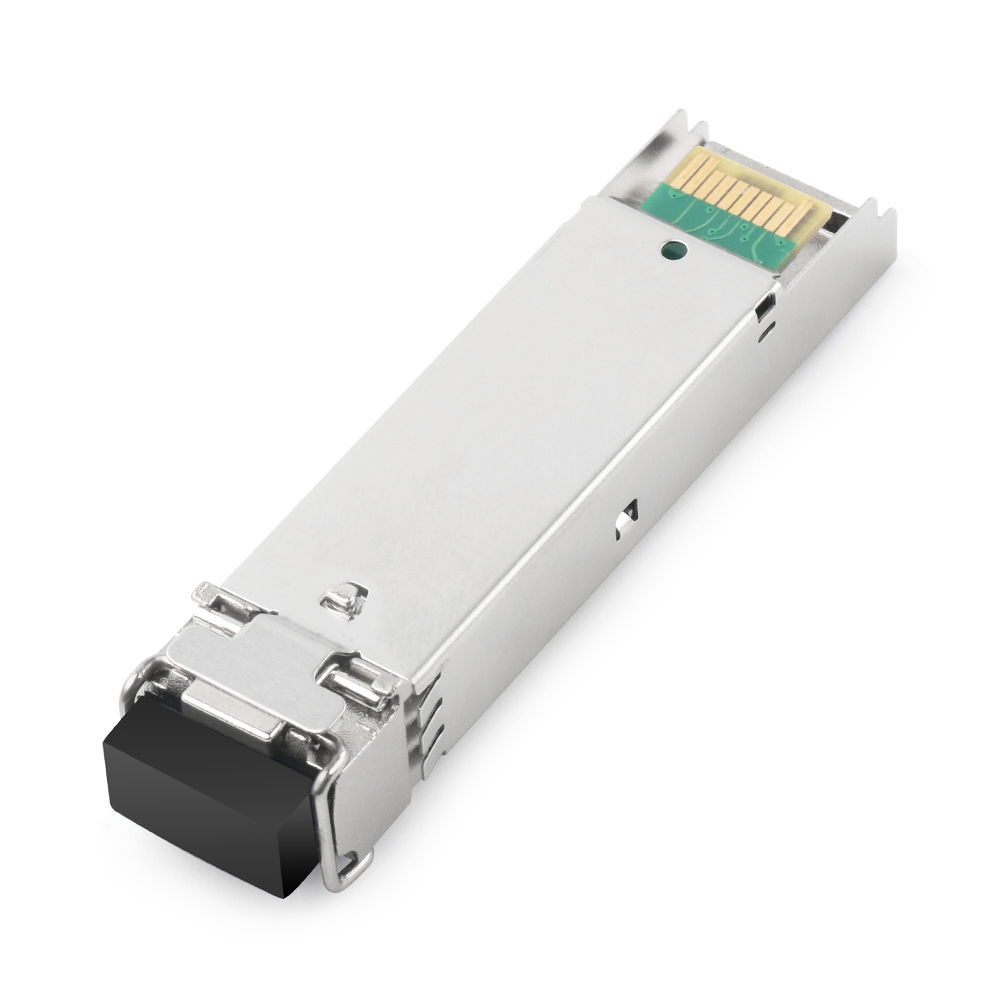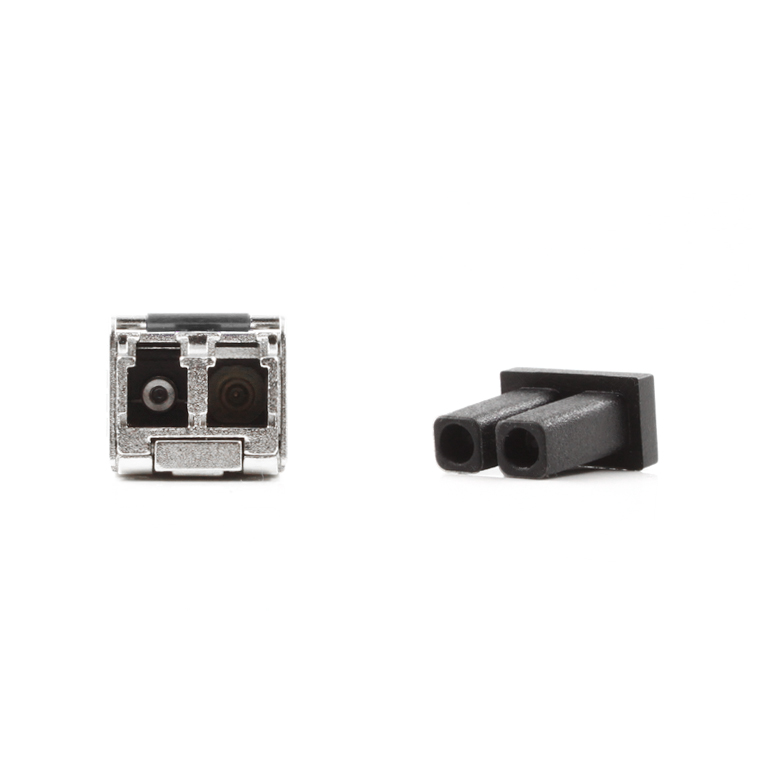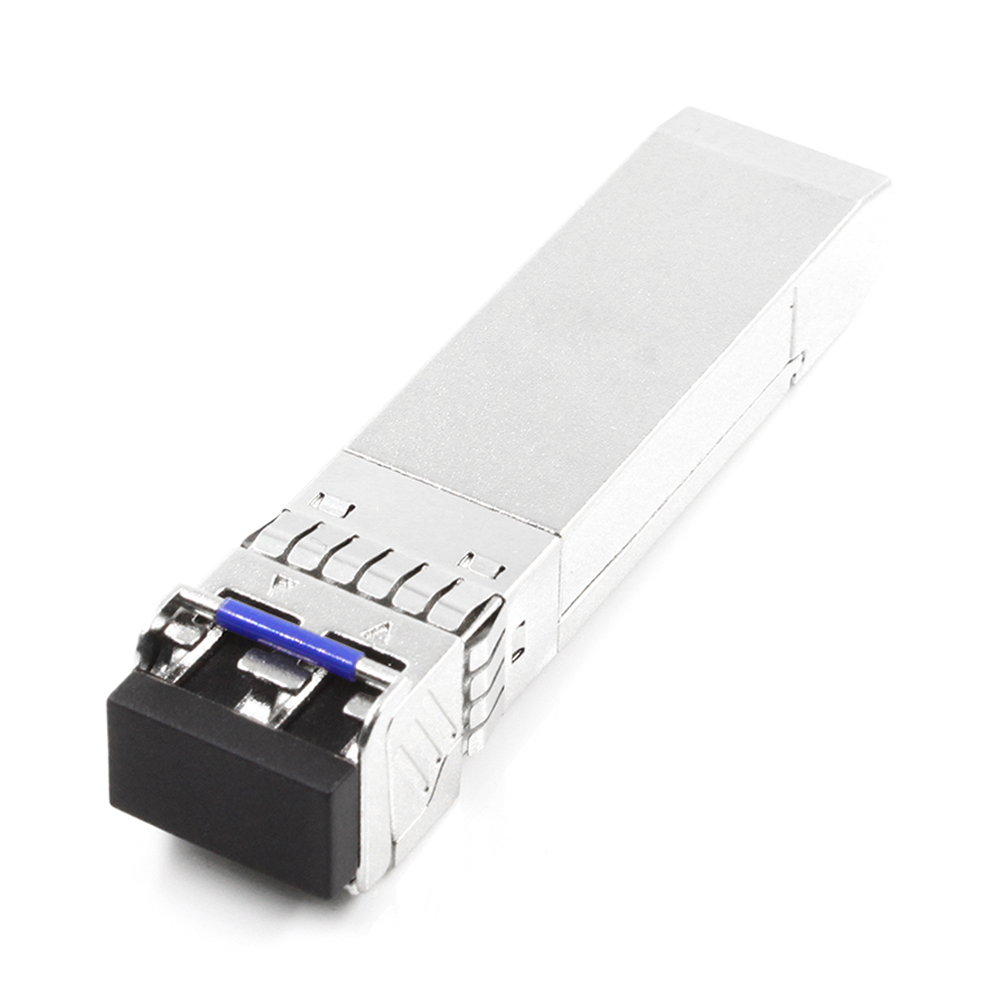
A fiber transceiver is a device that transmits and receives data over fiber optic cables. It is a crucial component in fiber optic communication networks and allows for high-speed data transmission over long distances.
A fiber transceiver has two main components: an optical transmitter and an optical receiver. The optical transmitter converts an electrical signal into an optical signal that can travel through the fiber optic cable. At the other end of the cable, the optical receiver receives the light signal and converts it back into an electrical signal that can be interpreted by receiving network equipment.
Fiber transceivers offer several benefits over traditional copper-based communication systems. Firstly, they allow for much higher data transmission rates over long distances due to their ability to carry signals that are less susceptible to interference. Additionally, fiber optic cables are immune to electromagnetic interference, making them ideal for use in areas with high levels of electrical interference. Finally, fiber optic communication systems are lightweight, compact, and flexible, making them suitable for use when space is limited.
Several fiber transceivers are available, including single-mode and multi-mode transceivers. Single-mode transceivers are designed for use over long distances and use a single beam of light to transmit data. On the other hand, multi-mode transceivers are designed for use over shorter distances and use multiple beams of light to send data simultaneously.
When choosing a fiber transceiver, there are several factors to consider, including the type of fiber optic cable being used, the distance the signal needs to travel, and the transmission rate required. It is also essential to ensure that the transceiver is compatible with the other components in the communication system, including cables, connectors, and network equipment. Consulting with a professional fiber optic technician can help ensure that the correct transceiver is chosen for your specific needs.

Single-mode fiber optic cables are designed to transmit signals over long distances with minimal signal loss. They have a smaller core size (typically 8-10 microns) that allows for a single path of light data transmission, which results in longer distances and higher bandwidth. Single-mode fiber optic cables are commonly used in telecommunications networks, international links, and high-speed data center applications.
Multimode fiber optic cables are typically used for shorter distances with higher signal losses. They have a larger core size (typically 50 or 62.5 microns) that can transmit multiple paths of light data transmission. Multimode fiber optic cables are commonly used in data centers, LANs, and other applications where longer distances are not required.
Several factors should be considered when selecting a fiber optic cable. These include cost, transmission distance, the type and speed of transmitting data, and installation requirements. The selection of a fiber optic cable also depends on the specific needs and constraints of the application.
For example, a single-mode fiber optic cable may be your best option to transmit data over a long distance. The space that a fiber optic cable can cover depends on the attenuation rate of the line, which means the loss of signal strength over distance. Single-mode fiber optic cables have lower attenuation rates and can transmit signals over longer distances than multimode fiber optic cables.
Before installing a fiber optic cable, it is essential to ensure that the line is compatible with the transceivers used to transmit and receive signals. Transceivers vary by type, data rate, and wavelength; not all are compatible with fiber optic cables. Understanding the compatibility requirements and selecting the right combination of line and transceiver is crucial for ensuring efficient data transmission.
Fiber optic cable installation requires precise techniques and careful planning to ensure optimal performance and safety. Installing fiber optic cables involves several steps, including preparing the line and the connector, pulling the line, and terminating and testing the line. It is essential to choose the correct cable routing and avoid sharp bends and creases to prevent damage to the cable.
Besides, fiber optic cable installation requires specialized tools and equipment, including cable cutters, stripping tools, and splicing machines. Proper training and experience are also necessary to ensure the installation work is performed safely and accurately. Following best practices and guidelines for fiber optic cable installation can help ensure the cable performs optimally and is safe to use.
Recommended Products: AscentOptics’ 32G FC SFP transceivers

Connectors form a vital part of fiber optic systems, including transceivers. They ensure an uninterrupted flow of optical signals between devices, allowing for reliable communication over the network. Connectors also offer flexibility by allowing quick and easy replacement of faulty or damaged cables without affecting the entire network.
Several connector types are used in fiber transceivers, each with specific characteristics that make it suitable for certain applications. Examples of common connector types include LC, SC, ST, and FC connectors. LC connectors offer high-density connectivity, making them ideal for data centers. SC connectors are easy to install and remove, while ST connectors are sturdy and reliable, making them suitable for harsh environments. FC connectors offer increased security and are prevalent in military and aerospace applications.
Selecting the correct connector for your fiber transceiver is crucial in achieving optimal performance and function. Factors to consider when choosing a connector include the specific application, the size and shape of the connector, the type of cable, the environment in which it will be used, and the cost. A connector that is compatible with other network devices should also be selected to ensure seamless communication.
It is crucial to consider compatibility and interoperability when selecting connectors for fiber transceivers. The connector used in one device may not be compatible with another, leading to communication breakdowns. To avoid compatibility issues, it is essential to select connectors that are compatible with the devices to be used in the network. Opting for standard connectors that allow for interoperability with different devices and networks is also advisable.
Proper installation and maintenance of fiber transceiver connectors ensure optimal performance and function. Steps should be taken to ensure that connectors are clean before use, as dirt and debris can interfere with signal transmission. Regular inspection and cleaning of connectors can help identify problems early and prevent the failure of the entire network. It is also vital to adhere to the recommended installation procedures to avoid damage to the connectors and ensure the safety of users.

Fiber transceivers commonly use two types of wavelengths: single-mode and multi-mode. Single-mode fibers use a narrower wavelength range and offer higher transmission speeds and longer distances without signal loss, making them ideal for long-haul applications. Multi-mode fibers, on the other hand, use a wider wavelength range and can transmit lower power signals over shorter distances, making them great for data centers and enterprise networks.
Mismatched wavelengths between transceivers and optical fibers can lead to significant errors or signal loss, reducing the performance of the fiber optic system. It is crucial to match the wavelengths between fiber transceivers and optical fibers to maximize their performance and prevent any issues that may arise.
Wavelength Division Multiplexing (WDM) is a technology used in fiber transceivers to increase the bandwidth of the fiber optic system. WDM splits the incoming signal into different colors or wavelengths and then recombines them at the other end of the fiber. Two types of WDM systems exist Coarse Wavelength Division Multiplexing (CWDM) and Dense Wavelength Division Multiplexing (DWDM). CWDM is used for short distances where fewer signals need to be transmitted, such as in LANs or storage area networks. DWDM, on the other hand, is used for long-haul transmissions and offers higher bandwidth over longer distances.
The choice of wavelength in fiber transceivers depends on several factors, including the optical fiber type, the distance between transceivers, available bandwidth, and equipment compatibility. Choosing the optimal wavelength for a specific application can improve the overall performance of a fiber optic system. It is essential to consider the wavelength options and their respective advantages to select the most suitable wavelength for the intended use.
Recommended Products: AscentOptics’ 16G FC SFP+ optical transceivers

Several factors can affect the transmission distance of fiber transceivers. Physical limitations, such as attenuation, dispersion, and nonlinearity, are among the most significant factors. Attenuation refers to the loss of signal strength as the signal travels through the fiber optic cable. Dispersion refers to the spreading of the signal, which can cause errors and affect transmission distance. Nonlinearity refers to the distortion of the signal waveform, which can also impact transmission distance. Network design considerations, such as power budgets, network topology, and signal quality, are essential to determining transmission distance.
Fiber optic transceivers have varying speed and data rate capabilities ranging from 10 Mbps to 400 Gbps or more. The type of fiber and the mode of operation, such as single mode or multimode, can impact the speed and data rate capabilities of fiber transceivers. Understanding the speed and data rate capabilities of fiber transceivers is critical in designing fiber optic networks that can efficiently handle the data rate requirements of various applications.
The transmission distance of fiber optic signals is limited due to physical constraints such as attenuation and dispersion. However, several methods can be used to overcome these limitations. One common approach is to use fiber optic amplifiers, which can boost signal strength and extend the transmission distance. Another method is to use dispersion compensation techniques to help compensate for the signal spreading and improve transmission distance. Careful selection of fiber optic transceivers and network components can also help overcome transmission distance limitations.
Media converters are valuable tools in extending the transmission distance of fiber optic signals. Media converters can convert the signal from one fiber optic type, such as single mode, to another, such as multimode. This can be useful when the transmission distance exceeds the capabilities of a single-mode fiber and requires switching to a multimode fiber. Media converters can also convert between fiber optic and copper Ethernet interfaces, providing additional flexibility in network design.
High-speed applications like data centers, video streaming, and teleconferencing require fiber optic networks supporting high data rates. To achieve this, it is essential to consider several factors, such as fiber optic cable type, transceiver specifications, and network topology. For example, choosing single-mode fiber optic cables and transceivers can support higher data rates over longer distances. Similarly, careful network design and topology can help ensure efficient and reliable data transmission for high-speed applications.

Network engineers can follow specific steps to troubleshoot and resolve common problems when dealing with fiber transceiver issues. These troubleshooting tips may include checking the cable connections, verifying power sources, inspecting for physical damage or overheating, and verifying compatibility with other network components. Installing firmware updates and changing configuration settings may also help resolve specific issues. By following these tips, network engineers can troubleshoot and resolve fiber transceiver problems more efficiently, minimizing network downtime.
Maintaining and cleaning fiber transceivers are crucial for their optimal performance and longevity. Best practices for preserving fiber transceivers include regular cleaning and inspection, using the appropriate cleaning tools and solutions, and following the manufacturer’s guidelines. Additionally, keeping the transceivers in a dust-free environment and avoiding prolonged exposure to high temperatures can help prevent damage and improve performance.
Signal loss is a common issue that can cause disruptions in network operations. To prevent signal loss, network engineers should ensure that fiber transceivers operate within acceptable power and wavelength ranges, use high-quality fiber optic cables, and avoid bending or kinking the cables. Optimizing performance can also be achieved by selecting reliable fiber transceiver brands with proven performance records, choosing transceivers with advanced features such as auto-negotiation, and regularly monitoring the network for potential issues.
Fiber transceivers must be compatible with network components such as switches, routers, and media converters. Compatibility issues can arise if the network components use different technologies or have additional power requirements. To ensure compatibility, network engineers should select compatible network components and use transceivers certified by the manufacturer for compatibility with specific network devices. Regular firmware updates and system checks can help maintain compatibility and prevent potential issues.

A: The main function of a fiber transceiver module is to transmit and receive data over optical fibers. It acts as the interface between networking devices, such as switches, routers, media converters, and the optical network.
A: An SFP (Small Form-Factor Pluggable) transceiver is a specific type of optical transceiver module. It is a hot-pluggable, compact module with a standard form factor that can be easily inserted and removed from networking devices.
A: A media converter is a device that converts signals between different types of media, such as fiber optic and copper cables. It can be used with transceiver modules to connect different types of networks or extend the transmission distance.
A: Form factor refers to a transceiver module’s physical dimensions and shape. Different form factors exist to accommodate other networking devices and applications. Examples of form factors include SFP, QSFP, and MPO.
A: Transceiver form factors are often associated with specific speed and distance capabilities. For example, SFP modules are commonly used for Gigabit Ethernet applications, while QSFP modules are used for 10 Gigabit Ethernet and higher-speed applications.
A: Transceiver modules can be used with single-mode and multi-mode fiber cables. However, selecting the appropriate transceiver module and cable type for the specific application and distance requirements is important.
A: Transceiver modules play a crucial role in fiber optic networks. They enable the transmission of data over optical fibers, allow for connectivity between various networking devices, and help optimize the performance and reliability of the network.